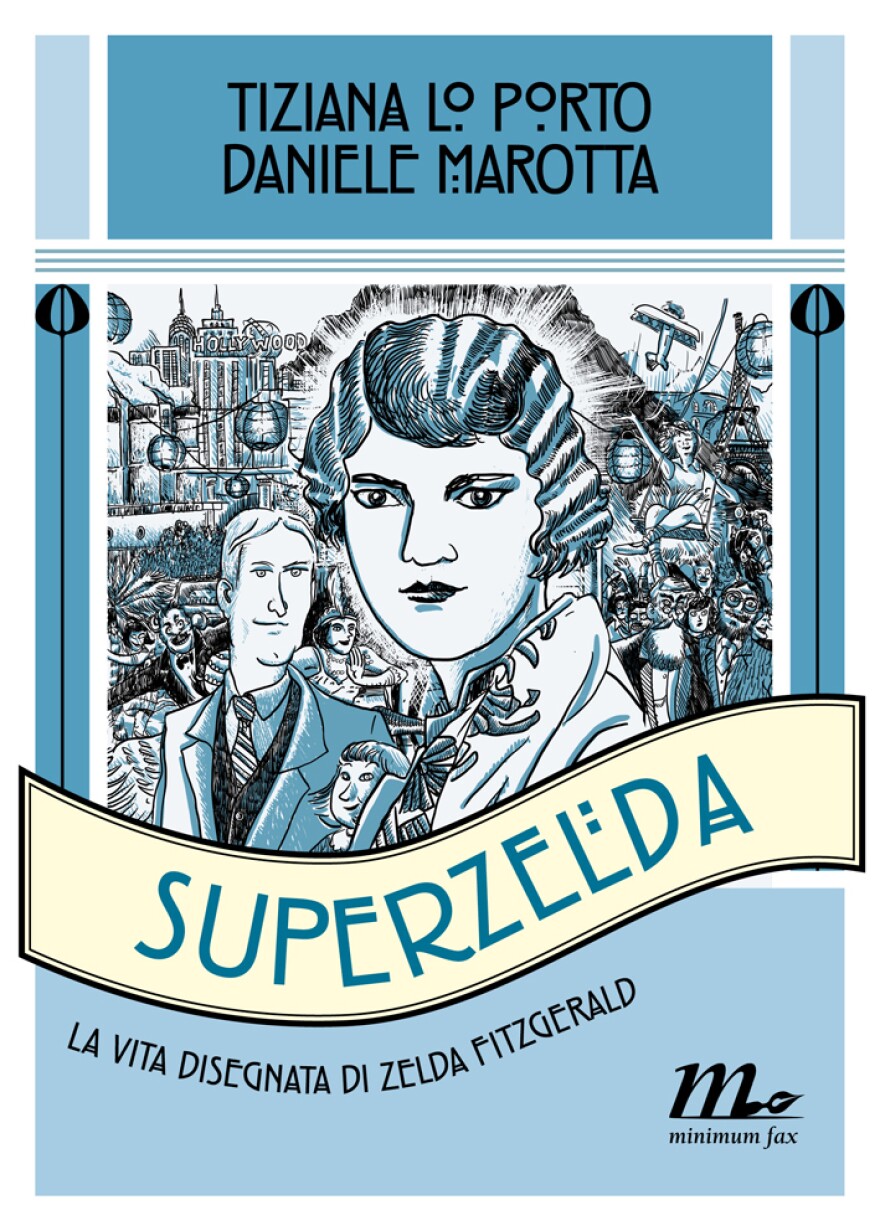“Superzelda: The Graphic Life of Zelda Fitzgerald”
Author: Tizania Lo Porto
Illustrator: Daniele Marotta
Publisher: One Peace Books
Pages: 175
Price: $16.95 (Paper)
Graphic books are, to me, a relatively new phenomenon. I have seen a few graphic novels and Lila Quintero Weaver’s fine graphic memoir, “Darkroom,” but this is my first graphic biography. As successful as many graphic novels may be, perhaps graphic books are not suited to biography. In biography we usually already know what the characters look like. Sometimes the faces are downright famous.
And the plot is known. Who does not know Zelda was rambunctious, talented at painting, ballet and writing fiction, sexy, sometimes crazy and died in a fire? If one knows nearly nothing about Zelda Sayre Fitzgerald and if one has absolutely no time or inclination to read one of the recent biographies of Zelda —and there are several—then there might be some benefit to “Superzelda.” There are some positive things to say.
To begin with, there is clearly an immense amount of effort on the part of the artist. Some of the 175 pages have as many as nine individual drawings. Considerable inventiveness has to be exercised to think up and draw so many scenes in depicting the life.
To avoid repetition and dullness, a good many “devices” are employed. There are many “portraits,” beginning with Zelda’s parents and siblings, each accompanied by a phrase.
Her brother, Anthony, has the caption: “He quits his studies, announcing that there is nothing he would rather do than paint. But then he doesn’t. In 1933, he commits suicide.” Intriguing but sparse.
Of course the reader would like some more information here, but in a graphic biography there is no room.
Zelda’s sister Rosalind is identified as “the smartest of the Sayre sisters” and Clotilde as “the prettiest sister and the one whom Zelda fights with most often.” Friends and acquaintances of Zelda often remarked it was impossible to describe her hair, skin and eyes, even insisting that photographs never captured her exact colors, but the drawings of Zelda disappoint.
A few of the drawings of Zelda do come close but many of the drawings don’t look like one another and young Zelda is depicted, startlingly , looking like a smart-aleck cartoon character, perhaps Lucy in the Charlie Brown cartoons. The renderings of an older Zelda, her face drawn and unhappy, come closer to photographs.
Scott likewise was ineffably handsome, and the artist does a little better with his face. At first nearly pretty, the ravages of alcohol and stress are more apparent as the book progresses.
Some faces are, of course, invented but still unpleasant: the photographer at the wedding and the desk clerk at the Biltmore, where the Fitzgeralds honeymooned, have grotesque teeth . The photographer looks like a low-level Mafioso and the desk clerk like a monster from German expressionism. (And there was, alas, no photographer at the Fitzgeralds’ wedding.)
Some other well-known faces are strangely inaccurate. Hemingway looks like a demented Charlton Heston, T.S. Eliot like a mid-level gangster, not even a capo. The French aviator, Edouard Jozan, Zelda’s Riviera fling, belongs on the cover of a romance novel. Quibbling about the drawings is of course subjective. Throughout, to add variety, people who knew Scott and Zelda are quoted beside their portraits. They speak to the reader as if this were a stage play or perhaps a documentary. Dorothy Parker, always a contrarian, says “I’ve never thought she was very beautiful.”
Sometimes Scott himself breaks the fourth wall and addresses the reader directly, usually with a well-known quote: “Liquor on my mouth is sweet to her,” for example.
In this graphic biography there are a number of drawings of Scott and Zelda in the nude, but I would hardly call them graphic, merely gratuitous.
There are some blatant errors in the text. We are told Scott’s first infidelity was in 1936. No one has believed that for years. Zelda biographer Sally Cline has done the research, found adulterous flings as early as 1920, the year of the wedding, and names names.
Lo Porto tells us: “in 1924, With their last $50,000 they buy, among other things, a second-hand Marmon, an engraving by Picasso, a pair of identical white knickerbocker suits, and two first class tickets to Europe.” The Marmon and the suits were from 1920 and Scott had published an essay on “How to Live on $36,000 a year.” The essay was satirical. The Fitzgeralds’ lifestyle was so excessive they were unable to live on $36,000, which was 20 times the average American salary. They were headed to Europe to economize.
They, famously, went to Europe with $7,000. It didn’t last them very long. The text of “Superzelda” is not super; it is not even reliable.
This review was originally broadcast on Alabama Public Radio. Don Noble is host of the Alabama Public Television literary interview show “Bookmark” and the editor of “A State of Laughter: Comic Fiction from Alabama.”


